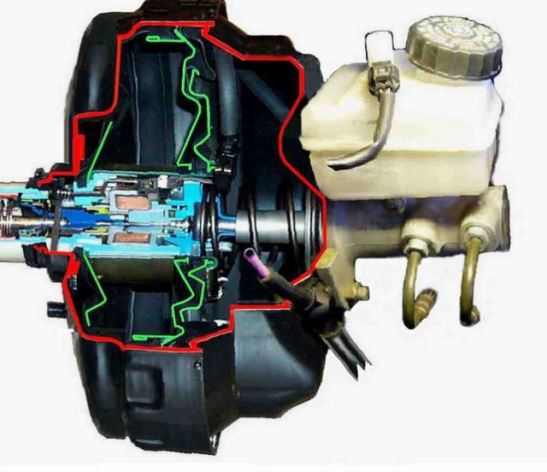Manual vs Power automotive brakes?
Just wondering what the difference is exactly, and how do I know what I have? Are power brakes relatively new? I know both are hydraulic, and some people tend to prefer one style over another, and that you can get both manual and power brakes in both druma and disc versions… I just don't get what exactly it means mechanically for a brake to be "powered". For examples, would a 2003 f150 have manual or powered brakes? How about a 1965 Ford? Or a 2009 hyundai? Etc…
Added (1). Based on the appearance of a cansiter in front of the master cylinder, I'm pretty sure my 72 volkswagen beetle did not have power brakes then… I guess its more of a necessity with bigger cars/trucks?
Virtually every car made in the last 40 years has power brakes. If the master cylinder is sitting in front of a round cannister, it has power brakes. It uses vacuum from the engine to multiply the force of pushing the pedal. 
You do not have a choice in braking systems you want, heaters were a option at one time but you can't get a car without one today. Even that 65 you mentioned would have power brakes you would have to go back to the 50's to find cars without power assist of some sort.
Power brakes are manual brakes plus a brake booster that pushes on the brakes when you do, so you don't have to push as hard. That brake booster is powered by vacuum from the engine.
If you turn off your engine (or if it stops on its own), you lose your power brakes and have only manual brakes. You will have to push much harder on the pedal to stop the car. It is not a subtle difference, even in a small car.
If you want to test it, go somewhere flat that you have open space. Get up to 15 miles an hour. Then shift into neutral turn off your engine. Try to stop the car. If your first thought is, "The brakes aren't working at all" or "the brakes pedal feels like it isn't moving at all. Something is wrong", then you have a car with power brakes. Push hard on the pedal to stop the car.
I mean hard. You will feel your back pressing against the seat you'll be pushing so hard.
Be careful. Many cars have a steering wheel lock, and if you turn the key all the way off, you won't be able to turn the wheel. Just turn the key back one click so that the engine stops.
Your power steering has a similar system. When the car is moving, it isn't hard to turn the wheel with or without power steering (although you will feel a difference). When the car isn't moving at all (such as when you are trying to parallel park), it will be very hard to turn the wheel without the help of the power steering.
Power brakes have been a fixture in most cars since the late 1960's and were available on some cars for a long time before that.
Power brakes are a mechanical device that multiplies the force of the brake fluid that operates your car's drum or disc brakes. The vacuum booster is the device that provides the additional power for your braking system. It was invented in 1927 so has been around a long time.
Before power brakes, your foot had to supply all of the power to stop the car and braking systems weren't as powerful. It took a lot longer to bring a car to a stop without the addition of power brakes.
My Grandpa's 1960's Ford Truck didn't have power brakes, nor did his Nash Rambler. My 1970 Chevy El Camino did as did my Dad's 60s Pontiacs. Every car I have owned or driven since 1970 had power brakes.
- Why does Michigan have such a heavy automotive influence? I know I may sound kind of stupid asking this but it's been bugging me for awhile. GM, Ford, and Chrysler all have their headquarters in Michigan and mainly produce and manufacture cars their so I d just like to know why.
- WHAT WRONG? No lecture$. LHF brakes metal to metal week+ Today pedal goes to floor No brake power until almost bottom out Fluid not low? 05 AWD Ford Freestyle. Besides grinding all around brakes were fine. Now noise is close to negligible. Replacing Front pads/rotors tomorrow. A must to bleed now? Air in system? Caliper?
- What CAD software do aerospace and automotive companies use? As an engineering student, I'm learning how to use and become certified in SolidWorks. While SolidWorks is great and very useful, I don't imagine it is powerful enough for companies like Boeing or Ford or BMW to find useful. So, what kind of CAD/CAM software do companies like this use? Do they also use different kinds of software to visualize and simulate their designs?
- Best and worse vehicles made by automotive manufacturers? (survey)? Who doesn't love talking about trucks, cars, manufacturers, and all that good stuff? Name a list of automotive manufacturers (toyota, ford, etc) and then talk in your opinion about the "best" and "worse" vehicle they made and why.